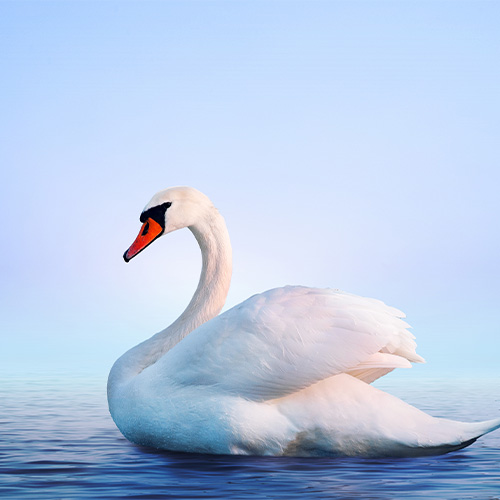Y2. Lesson 26. Art music - Wolfgang Amadeus Mozart
Prior learning: None
Duration: 30 minutes
Materials: Woodblocks or claves
Keywords: Beat, rhythm, singing, chanting, partners, rhymes, circle games.
Difficulty: ![]()
Prepare
Present
Composer Wolfgang Amadeus Mozart
Practise
Melodic canon
 Wolfgang Amadeus Mozart was a famous composer from Austria who lived in the 18th century. He is considered one of the greatest composers in the history of Western classical music. His music is known for its beauty, complexity, and emotional depth.
Wolfgang Amadeus Mozart was a famous composer from Austria who lived in the 18th century. He is considered one of the greatest composers in the history of Western classical music. His music is known for its beauty, complexity, and emotional depth.
 Melodic development
Melodic development
![]() Students sing a known song in melodic canon.
Students sing a known song in melodic canon.
- Divide the class into two groups.
- Tell the class that they will sing Ring a' Rosy in canon.
- Ask students what canon means.
- Both groups should sing the song from the beginning.
- The first group sings again, with the second group following one bar later.
- Monitor the two groups for accuracy, then switch them around.
 Rhythmic development
Rhythmic development
![]() Students determine and write the rhythm for “Bow Wow Wow"
Students determine and write the rhythm for “Bow Wow Wow"
- Lead the class in singing and clapping the song.
- Using their notebooks, students will determine and write the rhythm for “Bow Wow Wow”, adding bar lines and a time signature.
- Students should begin with the number 4
- It may be helpful to recite the time names for each measure to assist students.
- Monitor closely and give assistance where appropriate.
 Creative movement
Creative movement
![]() Students creatively move their bodies in response to music.
Students creatively move their bodies in response to music.

- Gather the students and introduce the piece of music. Explain that they will move like graceful swans, inspired by the music.
- Start with a warm-up to get their bodies ready for movement. Include gentle stretches and slow movements to mimic the calm and smooth flow of a swan.
- The Swan" once through without movement, asking the children to close their eyes and imagine a swan gliding through the water. Encourage them to think about how to express the swan’s movements with their bodies.
- Teach them to take wide, sweeping steps; arms extended gracefully like swan wings.
- Encourage them to sway gently from side to side, like a swan rocking softly on water.
- Show them how to lower and raise their bodies smoothly, imitating a swan dipping its head into the water and then lifting it up.
- Once they have practised the movements, play "The Swan" again and guide them through the sequence of movements, encouraging them to move smoothly and gracefully.
- After the activity, gather in a circle and discuss the experience. Ask them how they felt while moving like swans, what parts of the music inspired them the most, and if they noticed any changes in the music’s speed or volume.
 Listening
Listening
![]() Students listen to a piece of music written by Mozart.
Students listen to a piece of music written by Mozart.
- Teach that Wolfgang Amadeus Mozart was a famous composer born in Austria over 250 years ago. A true musical genius, he started writing songs at the age of five!
- He could play the piano and violin beautifully. Mozart created all kinds of music—funny tunes, dramatic operas, and graceful symphonies.
- His music often feels like a playful conversation between instruments, full of surprises and delightful melodies.
- People all around the world still love and listen to his music today. Mozart showed us that music has the power to express feelings and tell stories in the most magical ways, bringing joy to listeners of all ages.
- Play the piece on the audio player.
- Ask students what they thought of the music. How did it make them feel?
 Visual learning
Visual learning
![]() Students must avoid responding to a 'poison' rhythm.
Students must avoid responding to a 'poison' rhythm.
- Select a specific rhythm and display it clearly for the entire class to see. This will be known as the 'poison' rhythm.
- Encourage the students to engage with this rhythm by clapping it out and reciting it together multiple times until they are familiar with it.
- Ensure that once the game begins, they must avoid clapping or vocalising this particular rhythm; if anyone does, you earn a point.
- However, if the entire class successfully refrains from performing the 'forbidden' rhythm, they earn a point as a group.
- After this explanation, remove the rhythm from the board and proceed with the game.
- You can either present a series of rhythm flashcards (including a few that replicate the 'forbidden' rhythm) or clap out various rhythms yourself, prompting the students to identify them by ear and respond accordingly.
 Instruments
Instruments
![]() Students discover how to play Sally Go Round The Sun on tuned percussion.
Students discover how to play Sally Go Round The Sun on tuned percussion.
- Divide the class into two groups; one group will use glockenspiels, and the other will use xylophones or similar instruments.
- Teach the melody of Sally Go Round The Sun to the first group, using a good mallet technique.
- When secure, teach the accompaniment to the second group.
- When secure, lead both groups to play together and conduct whilst monitoring class progress.
- This exercise may take more than one learning period to master as it contains triplets. However, students should be familiar with the song through singing.

 Part work
Part work
![]() Students perform a song in canon.
Students perform a song in canon.
- Lead the class in singing the song.
- Divide the class into two groups.
- The first group will sing, followed by the second group two beats later.
- When secure, swap the two groups and repeat.
 Assess
Assess
Suggested lessons
Y1. Beat II

Y1. Beat III

Y1. Beat IV

